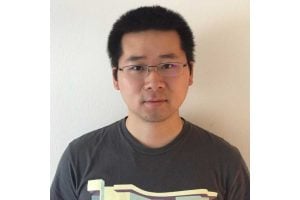
Dr. Yang Yang from UC Santa Barbara will visit to discuss stereoselective radical biocatalysis. Catch his talk on April 24th at 3pm in Maryland Hall Room 110.
Abstract: New Strategies for Stereoselective Radical Biocatalysis
Radical reactions have enjoyed widespread applications in small molecule and macromolecule synthesis. However, due to the lack of exploitable stereocontrol elements in synthetic systems, steering the absolute and relative stereochemistry of free radical transformations is notoriously difficult in asymmetric catalysis. Combining synthetic chemistry and biocatalysis, our group advanced two novel strategies to enable stereoselective free radical processes. First, by capitalizing on the innate redox properties of first-row transition-metal cofactors in natural metalloproteins, we repurposed natural metalloproteins to catalyze unnatural radical reactions in a stereocontrolled fashion. Through metalloenzyme-catalyzed atom transfer, a range of radical-mediated C–C, C–Br, and C–F bond forming processes proceeded with excellent stereocontrol. Our evolved metalloenzymes readily function in bacterial cells, displaying excellent total turnover numbers (up to 20,000) and diastereo- and enantioselectivities. Second, by merging visible light photoredox catalysis and biocatalysis, we advanced a novel mode of pyridoxal radical biocatalysis which is unprecedented in biochemistry and organic chemistry. This synergistic photoredox–pyridoxal radical biocatalysis allowed us to repurpose a range of pyridoxal phosphate (PLP) dependent enzymes as radical enzymes, leading to new radical PLP enzymology. Pyridoxal radical biocatalysis provides access to a range of non-canonical amino acids, including those bearing a stereochemical dyad or triad, with excellent diastereo- and enantiocontrol. Collectively, new-to-nature radical biocatalysis provide a new solution to discover new modes of catalysis involving transient free radical intermediates, allowing radical transformations to be performed with exquisite stereocontrol.
About The Speaker
Dr. Yang obtained his B.S. in Chemistry from Peking University in 2011. He received his Ph.D. degree in Organic Chemistry in 2016 under the guidance of Prof. Steve Buchwald at
MIT. In the Buchwald lab, he developed CuH-catalyzed methods for the asymmetric hydrofunctionalization of simple olefins. As an NIH Postdoctoral Fellow working with Prof. Frances Arnold at Caltech, Dr. Yang studied biocatalysis and protein engineering and developed biocatalytic asymmetric C–H amination. Dr. Yang started his independent career in the Department of Chemistry and Biochemistry at the University of California Santa Barbara in 2020. By integrating synthetic chemistry, biocatalysis, protein engineering, bioinformatics and computational tools, the Yang group is reprograming nature’s biosynthetic machineries to address challenging problems in organic chemistry and asymmetric catalysis. The Yang group recently coined and implemented two new strategies to advance novel stereoselective biocatalytic reactions, including metalloredox radical biocatalysis and pyridoxal radical biocatalysis. Dr. Yang is a recipient of the Regent’s Junior Faculty Fellowship Award (2021), Faculty Career Development Award (2022), NSF CAREER Award (2022), NIH Maximizing Investigators’ Research Award (2022), Thieme Chemistry Journals Award (2023), Army Research Office Young Investigator Award (2023) and Packard Fellowship (2023).